Why I prioritize competitor analysis that moves pipeline
I want clarity, not fluff. If you run a B2B services company and you're deciding where to place budget this quarter, you need competitor analysis that actually moves pipeline. Not someday - soon. The right stack helps me see what rivals rank for, where their ads pull demand, and which topics win trust with buyers who don't click on hype. In other words, fewer guesses and more decisions I can defend in the next exec meeting.
2025 snapshot: tools I reach for in B2B services
Before long lists and hot takes, here's a snapshot built for B2B services teams. I lean on accuracy, reporting, and practical integrations so I can hold a search program to real numbers. Ratings below are directional - based on vendor documentation and hands-on usage - and should be validated against your GA4/GSC.
Semrush
- Best for: professional services, IT services, agencies
- Pricing: tiered plans starting in the low 100s monthly
- Coverage: strong in US/UK/CA/AU
- Intel: deep organic and PPC data
- Keyword gaps: advanced gap tools
- SERP features: rich tracking, including featured snippets
- Historical data: 10+ years
- Accuracy: high
- Competitor overlap: yes
- Project management: Projects with tasks and audits
- Reporting: scheduled and white label
- Integrations: native GA4 and GSC; CRM via connectors
- API: yes
- Onboarding: moderate
- Trial/refund: often 7-day trials - verify current offers
Ahrefs
- Best for: engineer-led services, cybersecurity, compliance
- Pricing: credit model; tiers near the 100 monthly mark
- Coverage: strong in US/UK/CA/AU
- Intel: organic-focused with some paid insights
- Keyword gaps: advanced content gaps
- SERP features: tracked
- Historical data: 10+ years
- Accuracy: high for links; strong for keywords
- Competitor overlap: yes
- Project management: light
- Reporting: exports and dashboards
- Integrations: GSC import; BI via connectors
- API: yes
- Onboarding: moderate
- Trial/refund: no classic free trial; credits and Webmaster Tools help validate value
SpyFu
- Best for: demand-gen teams and PPC-driven services
- Pricing: budget-friendly tiers below 100 monthly; team options
- Coverage: strong in US/UK/CA/AU
- Intel: deep PPC plus SEO
- Keyword gaps: solid tools
- SERP features: tracked
- Historical data: 14+ years
- Accuracy: medium to high
- Competitor overlap: yes, Kombat
- Project management: Projects
- Reporting: scheduled and white label
- Integrations: Sheets/CSV; CRM via exports
- API: yes
- Onboarding: easy
- Trial/refund: free version; refunds often listed - confirm current terms
- Best overall (all-around SEO + PPC visibility): Semrush
- Best budget entry: SpyFu Basic
- Best PPC + SEO blend: SpyFu
Quick note on pricing and trials: vendors revise plans often. I always check pricing pages to confirm tiers, credits, data caps, and refund windows.
How I use Semrush, Ahrefs, and SpyFu in practice
I prioritize tools that reduce hand-waving, create defensible plans, and plug numbers into dashboards leaders already trust. Here's how I put each to work in B2B.
Semrush - my all-around pick
- What it does well for B2B:
- Organic Research and Position Tracking cover core solution phrases and long sales-cycle topics.
- Keyword Gap and Backlink Gap reveal where competitors win on problem and solution queries, including how-to and comparison terms buyers use before they talk to sales.
- PPC data exposes paid angles rivals sustain, so my content plan doesn't fight my ad plan.
- Topic tools point writers at searches that actually happen, not brainstorm darlings.
- Projects centralize domains, audits, and tasks; automated reporting keeps execs aligned.

- B2B use cases I run:
- Capture "solution + problem" terms such as "managed SOC for ransomware" or "ERP consulting for inventory issues," then watch featured snippets and PAA to shape layout.
- Build executive dashboards: rank by intent, share of voice versus named rivals, and pipeline-linked pages.
- 7-day sprint I've used:
- Day 1: Set up Projects for my domain and 3 main competitors; connect GA4/GSC.
- Day 2: Run Keyword Gap; tag by intent (problem, solution, brand); flag top-20 quick wins.
- Day 3: Pull Backlink Gap; mark domains linking to 2+ rivals but not me.
- Day 4: Add Position Tracking by ABM industries and regions; include SERP feature columns.
- Day 5: Build a topic list for 3 pillars; map to sales stages.
- Day 6: Schedule a concise report: rank movement, gap delta, PPC insights, content progress.
- Day 7: Align with sales; pick 5 bottom-funnel pages to ship this month.
- Pricing snapshot: tiered plans starting around the low 100s monthly, with higher tiers for more projects, users, and reports. Trials vary - verify current offers.
Ahrefs - my backlink and discovery specialist
- What it does well for B2B:
- Site Explorer and Keywords Explorer provide clean keyword views and trustworthy backlink data - useful when analyst coverage or digital PR is critical.
- Content Explorer reveals competitor clusters, who links to them, and where true thought leadership attracts references.
- Link Intersect quickly surfaces domains linking to rivals but not me for credible outreach lists.
- B2B playbook I like:
- For long-form thought leadership, use Content Explorer to find deep technical guides buyers actually read; reverse-engineer headers, internal links, and referring domains.
- For PR, filter Link Intersect by industry media and associations; pitch upgraded resources or original research.
- Quick wins:
- Build a content gap list against 3 competitors, filtered by KD and intent.
- Identify 10 supporting articles for one high-value service page; interlink with purposeful anchors.
- Track backlink velocity versus 3 peers to calibrate outreach cadence.
- Pricing snapshot: credit-based usage with tiers near the 100 monthly mark and a free webmaster product for site owners. No classic free trial; credits help validate value fast.
- One-liner versus Semrush: Ahrefs leads on backlinks and content discovery depth; Semrush on all-around toolkit, PPC data, and reporting.
SpyFu - my PPC + SEO clarity for bottom-funnel terms
- What it does well for B2B:
- Kombat shows keyword overlap so I can see who owns revenue terms and where I can wedge in.
- Ad history highlights copy and terms competitors kept funding, a proxy for intent and lead quality.
- PPC + SEO views make it easy to align paid terms with organic targets.
- B2B angle I apply:
- Harvest bottom-funnel paid terms like "SOC 2 audit pricing" or "managed SIEM cost" and build matching organic pages to lower blended CAC.
- 14-day action plan I've run:
- Days 1-2: Use Kombat on 3 rivals; pull non-brand, high-intent paid terms; tag by funnel stage.
- Days 3-4: Draft 5 organic pages for those terms with pricing context, implementation notes, and a comparison block.
- Days 5-7: Borrow proven phrases from ad history for titles and H1s.
- Days 8-10: Add tracking for target regions.
- Days 11-14: Report on tracked keywords, sessions, and inbound form fills.
- Pricing snapshot: budget-friendly entry tiers below 100 monthly, with a free version and money-back guarantees often listed - confirm current details.
- Need walkthroughs? See SpyFu's Blog, Tutorials, Glossary, and Videos.
A pragmatic evaluation checklist for B2B SEO tools
Here's the decision framework I use to sanity-check competitor analysis tools and keep teams accountable:
- Data accuracy and freshness: Are rankings and CPCs current for US, UK, CA, and AU, with location and vertical filters?
- Intent categorization: Can I tag keywords by problem, solution, and brand to mirror the sales funnel?
- ABM support: Can I filter by industries or build watchlists of named competitors and cohorts?
- Combined PPC and SEO visibility: One unified view beats tab switching; paid data should inform organic pages.
- Historical depth: I look for several years to spot trend shifts, seasonality, and competitor surges.
- Reporting automation: Scheduled reports with share of voice and pipeline-linked metrics keep leadership aligned.
- CRM and analytics fit: GA4 and GSC imports or connectors, plus easy exports to HubSpot or Salesforce.
- Seats and permissions: Multiple users and roles so marketing, content, and leadership see what matters.
- API for BI: I want warehouse-ready access without manual exports.
- Onboarding speed: Can a new analyst produce useful weekly reporting in under two weeks using templates?
- Compliance and privacy: Clear data handling if I serve regulated industries.
- Projects and ownership: Projects or folders that bundle tracking, tasks, and alerts to maintain accountability.
What "good" ROI looks like for B2B SEO
SEO compounds, but I still set early proof points and tie them to pipeline:
- First 90 days: Leading indicators - rank movement by intent, qualified impressions, SERP feature wins, and content shipped on time.
- Months 3 to 6: Pipeline lift from bottom-funnel pages, early meetings from problem queries, and first backlinks from targeted outreach.
- Months 6 to 12: CAC improvements as organic wins a larger share of revenue and paid spend is trimmed or redirected.
A simple ROI formula I use:
- ROI percent = (Net gain / Cost) × 100
- Example: Spend 6,000 on content and tools in a month. That work drives 15 MQLs → 6 SQLs → 2 deals at 18,000 total revenue. Net gain = 12,000. ROI = (12,000 / 6,000) × 100 = 200%.
- Caveat: Adjust for attribution windows, influenced vs. sourced pipeline, and deal length to avoid over- or under-counting.
How I map tool metrics to pipeline:
- Keywords to sessions: Track rank and clicks by intent; bottom-funnel terms should move sessions first.
- Sessions to MQLs: Compare conversion rates by page type; solution pages typically outconvert educational posts.
- MQLs to SQLs: Tag content-sourced leads and measure movement to meetings.
- SQLs to revenue: Attribute revenue to content clusters so I can decide which deserves another round.
Dashboard must-haves I rely on:
- Rank by intent and geo
- Competitor share of voice in target categories
- Content gap progress: count of priority terms entering top 10
- Backlink velocity versus peers and quality of referring domains
- PPC overlap: paid keywords covered with matching organic pages
- Reporting cadence: a weekly snapshot for marketing and a monthly summary for leadership
Quick answers to common questions
- What is the best free competitor analysis tool?
- For free or near-free starts, I use limited tiers and trials. Semrush sometimes runs 7-day trials to validate gaps and tracking. Ahrefs offers a free webmaster product and a credit model that can prove value quickly. SpyFu has a free tier with caps that still shows PPC and overlap trends. Always confirm current terms.
- Which competitor analysis tool is best for SEO?
- My all-around pick for B2B SEO is Semrush (Keyword Gap, Position Tracking, Projects, and reliable reporting). For backlink depth and content discovery - especially in technical fields - I reach for Ahrefs. If paid search matters, SpyFu's PPC clarity informs bottom-funnel pages and helps lower blended CAC.
- How do I choose the right competitor research tool?
- I run the checklist above and answer five fast questions: Do I get both organic and PPC views in US/UK/CA/AU? Can I tag keywords by problem/solution/brand? Will it plug into GA4, GSC, and my CRM with minimal manual work? Can I schedule a report a CEO can scan in five minutes? Does pricing fit my seats and data needs for 12 months? Then I run a 7-day proof: project setup, keyword gap, intent tagging, tracking for 50 priority terms, and a one-page pipeline-mapped report.
- Can small businesses use these tools effectively?
- Yes - by staying focused. I start with one project for the main service, use intent-based gaps to plan five pages, and schedule reports so updates never slip. SpyFu Basic is a strong budget entry; annual plans on Semrush or Ahrefs can reduce cost if I'm in them weekly.
- What data can I get from competitor analysis tools?
- Keywords, traffic estimates, SERP features, backlinks, ad history, content gaps, and category share of voice. In B2B, that translates to: spotting competitor bottom-funnel terms sales hears on calls, identifying pages that drive demos (not just views), seeing who links to rivals and why, and matching paid terms with organic pages to lower blended CAC.
Final takeaway: turn insights into pipeline
I pick one of the top tools, set a two-week reporting rhythm, and tie every insight to a page or a test. When the dashboard links keywords to sessions, sessions to MQLs, and MQLs to revenue, the search program stops feeling like a black box and starts acting like a growth channel.

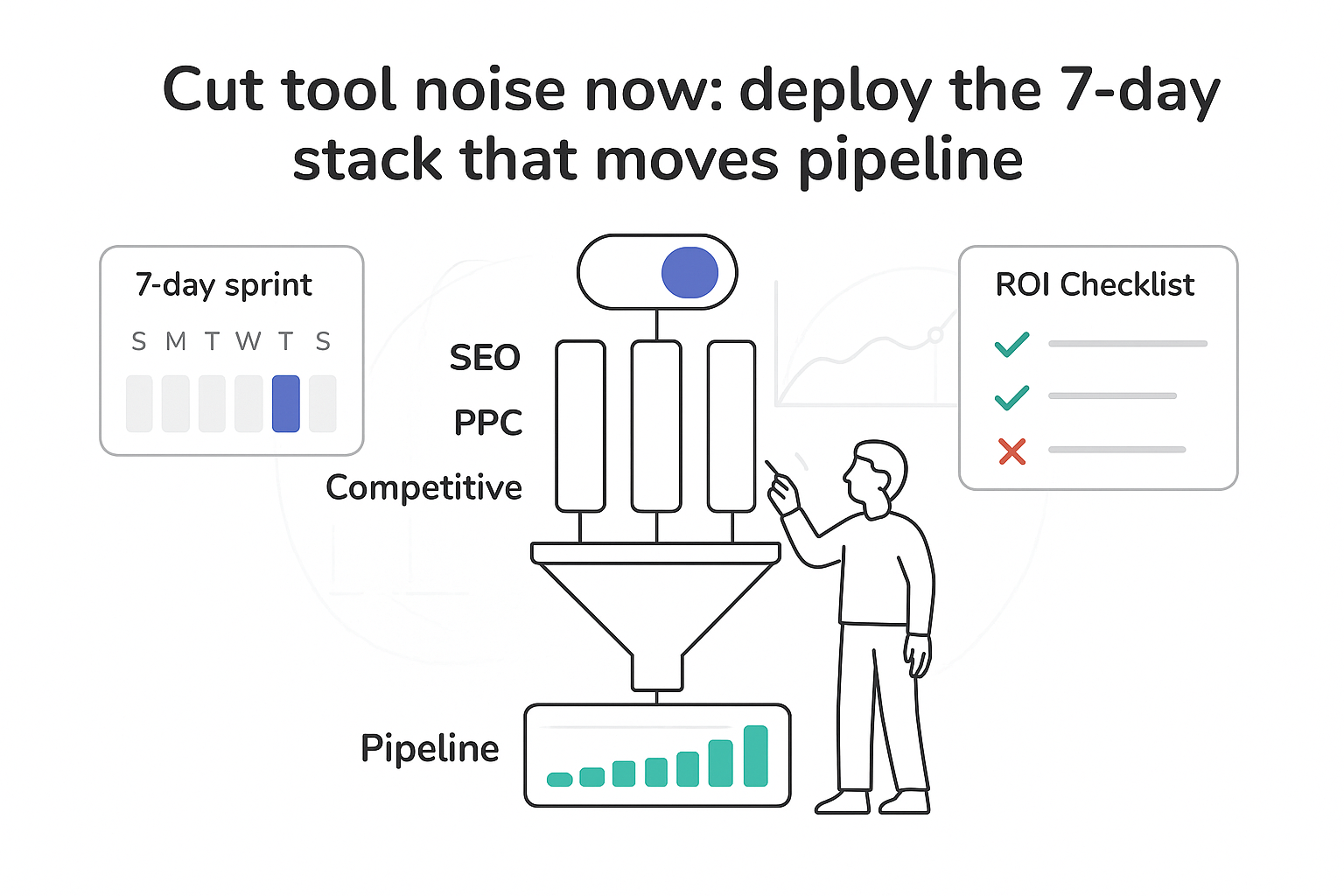

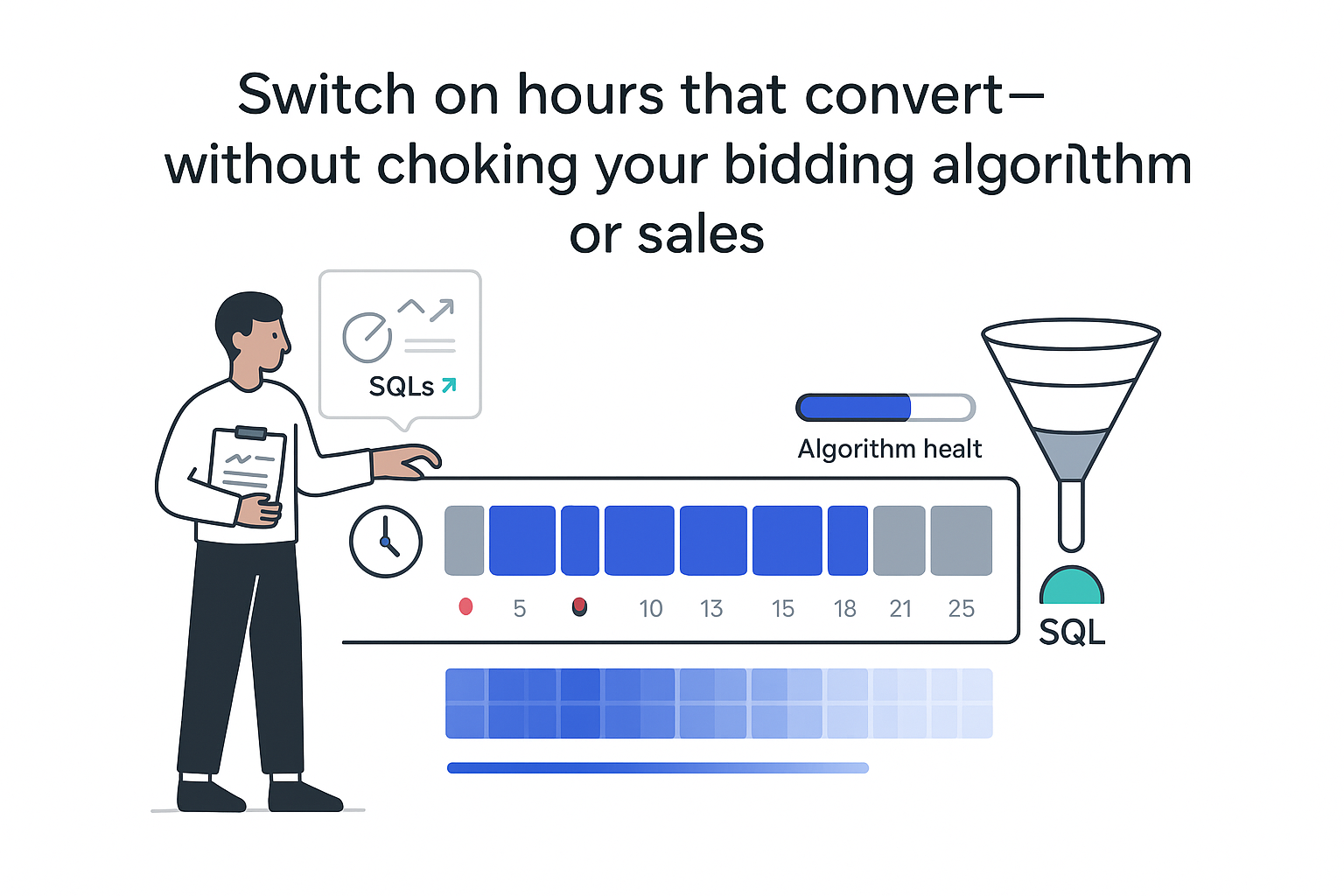
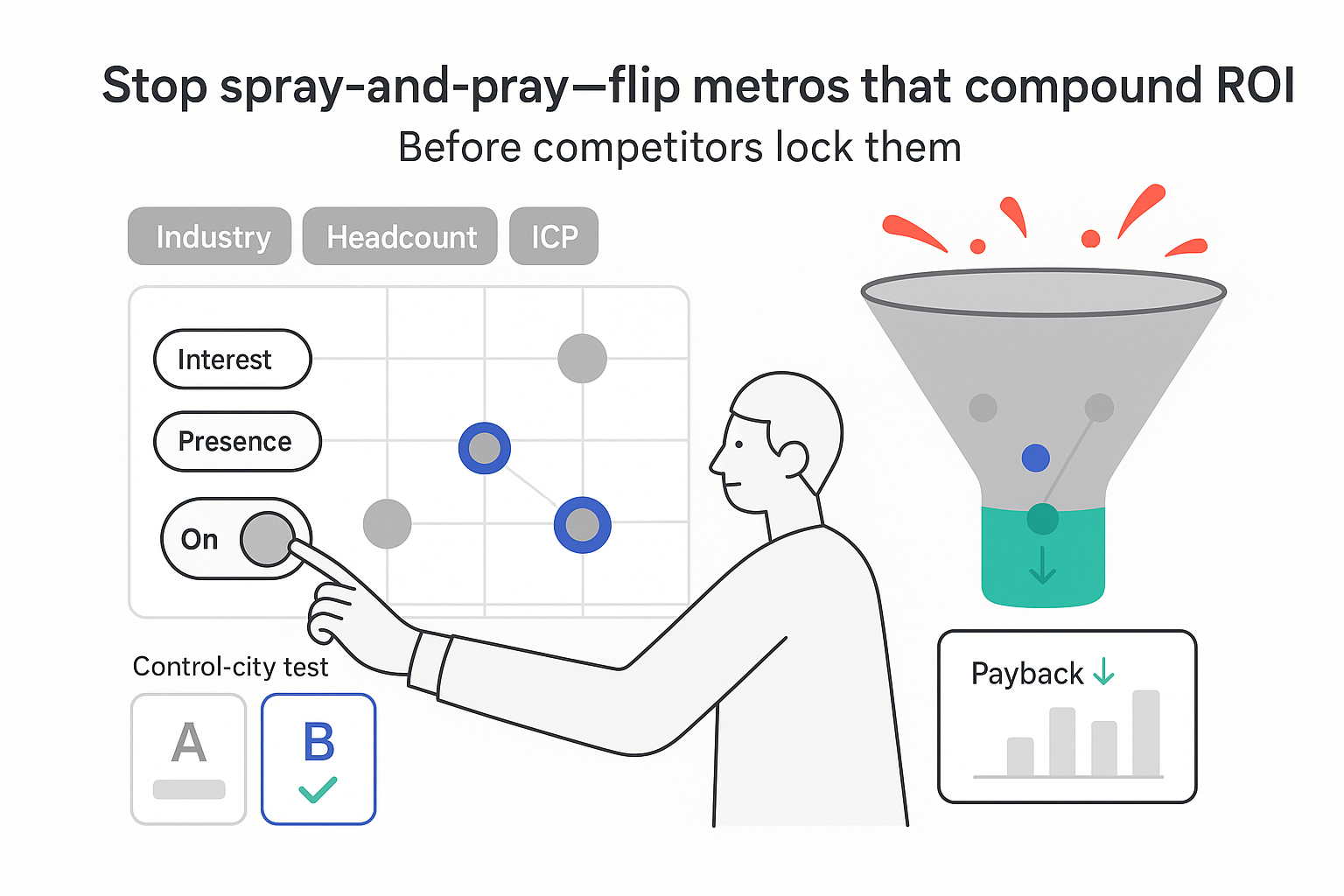
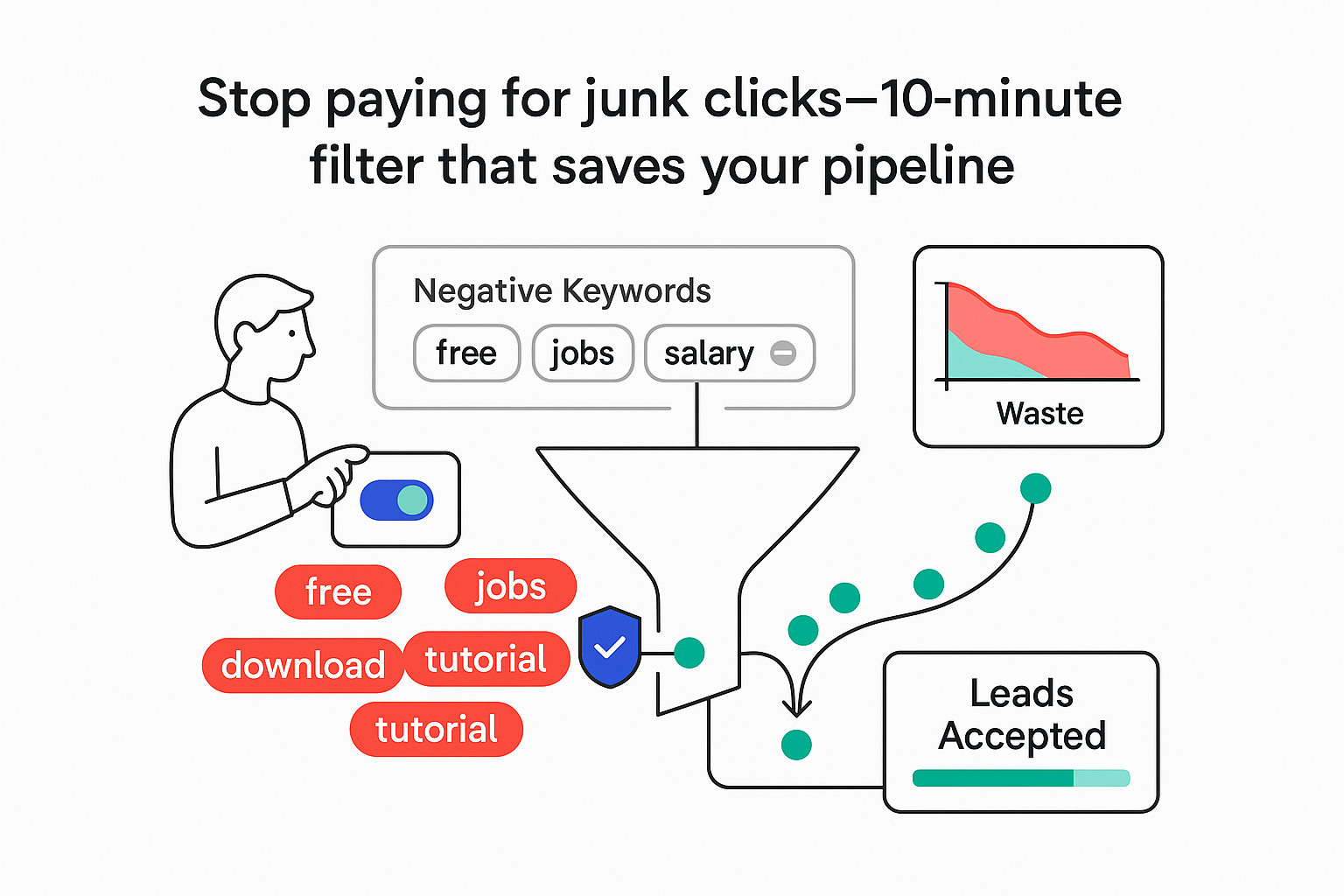
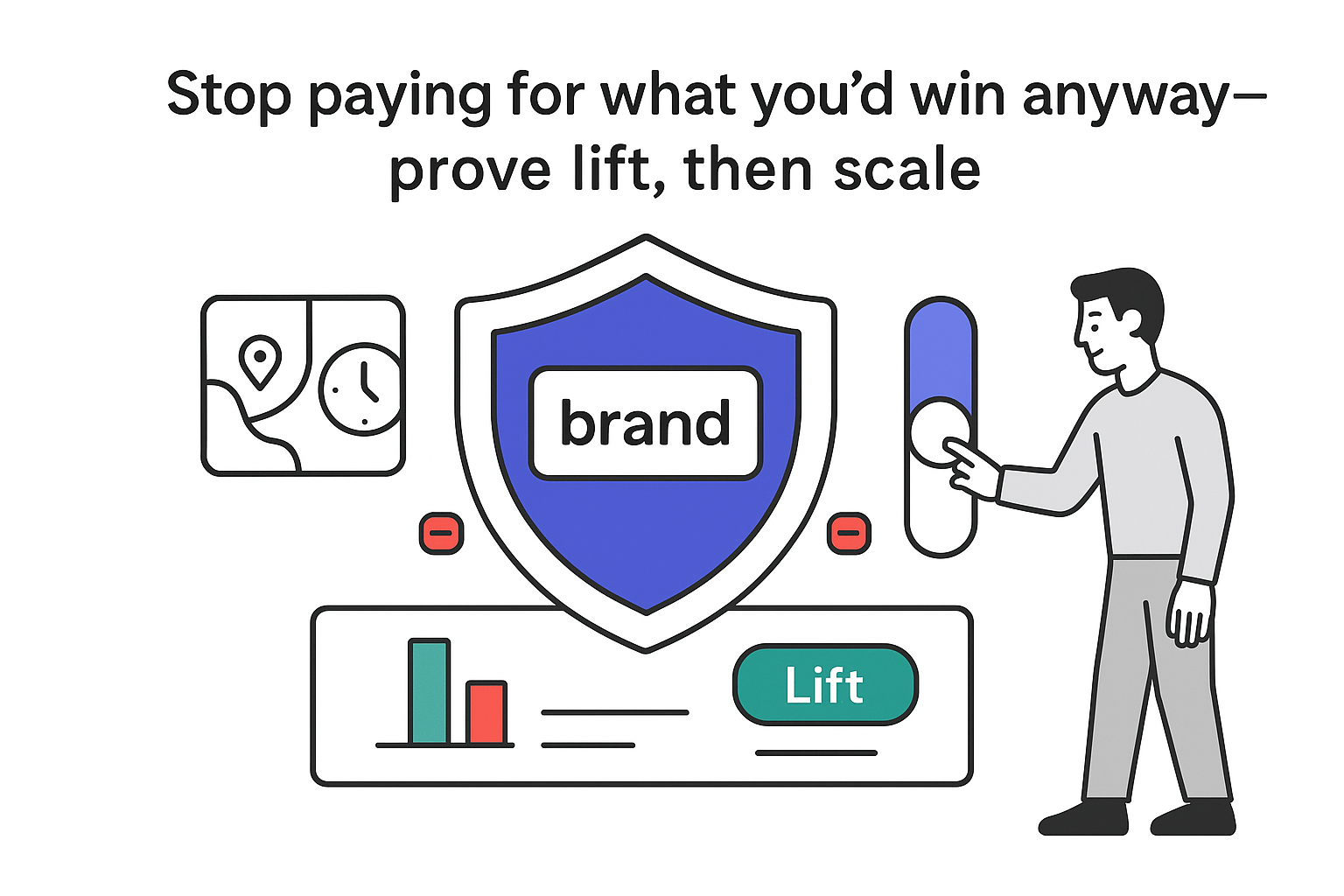
.svg)